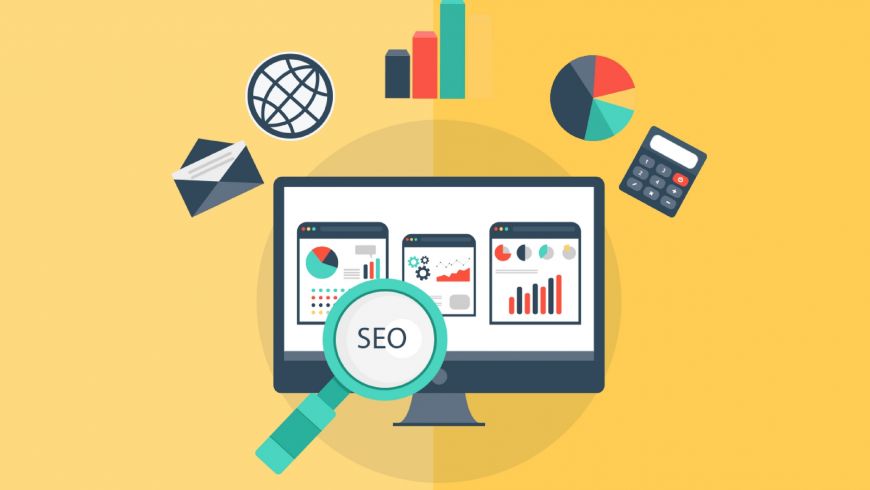-
Follow us
-
0723.20.82.90 -
office@iagency.ro 




Reaching a top position on search engines isn't quite the most simple thing in the world. Google becomes more and more "intelligent" every day, so you need much more than good content to surpass your competitors. On-page SEO optimization is one of the first steps you have to take, in order to propel your site towards the top Google results.
Why is on-page SEO optimization so important? On-page SEO optimization is fundamental, both to reach the top results in SERP, and to make your site more user-friendly for the visitors. In this article, we will present the most important on-page SEO optimization techniques, which can offer you a better visibility in search engines and a better CTR (click-through-rate).
1. Optimizing the meta title
The meta title is, by far, the most important on-page SEO optimization element. The meta title should be short, but descriptive enough for your visitors to identify your business. The meta title is the first element of your site indexed by searched engines and reflected in SERP, having a great importance for users: from the thousands of search results a user sees, the meta title has the role of attracting him, so that he wants to find out more and visit your site.
Important elements to include in the meta title:
- the name of the business/site;
- keywords specific to your business (if you deliver pizza, it's important to include long-tail keywords like "pizza home delivery" or "order pizza" in the meta title);
- some specialists recommend including your phone number in the meta title; it doesn't bring any benefit SEO-wise, but it can act as a "call-to-action" and can make users contact you faster.
2. Optimizing the meta description
The meta description of a site (of its homepage, to be more precise) should contain a short description of your business and the services it offers. Actually, each page of your website will need a relevant meta description, which can summarize its content in about 160 characters. The text of a meta description resembles a selling ad: if a user finds it attractive enough, he will access your website and look for more information. If the meta description is too general and irrelevant for the user, he will ignore your site and pick those he finds useful for his needs.
Important elements to include in the meta description:
- the main characteristic of your products or services (for example, if you sell cheap clothes, it's a good idea to include phrases like "clothes starting from 2.99 dollars");
- the name of your brand;
- keywords.
3. Including the most important HTML tags
This step is necessary in order to highlight the sections of a page, especially the homepage. Among the most important HTML tags are [h1], [h2], [h3] etc. Using these, the search engine classifies different sections on a page by its importance. For example, the [h1] tag should be used only once for a page, indicating its title.
4. Optimizing the content
The content of your website should be SEO optimized both for search engines and for users, because the keywords are one of the most important elements by which the subject of a certain page is identified. However, if you use keywords excessively, also known as keyboard stuffing, you can be penalized by Google, because this is a black hat SEO technique.
Important elements in optimizing keywords:
- research: before you choose your keywords, you should make a research and find out which are the most suitable for your business;
- keyword density: keywords must be used moderately, so that search engines know it's a truly relevant page;
- long-tail keywords: it's easier to rank on long-tail keywords rather than simple and general keywords (for example, if you have a business in Londonwhich sells luxury cars, it's not indicated to use a keyword like "cars", but a long-tail keyword like "luxury cars sales in London").
5. Optimizing links
It's important to optimize both the internal links and the backlinks, not only for SEO benefits, but also for offering the users an easier browsing experience.
Important elements in optimizing links:
- using keywords in anchors;
- using keywords in the link structure;
- using permalinks.
6. Optimizing images
If your site includes images, they should be SEO optimized, because Google can't "see" images the way people do. To identify and differentiate images, Google reads the titles and tags associated with them.
Important elements in optimizing images:
- Alt text - the text shown when the cursor is on top of the image;
- the name of the file (it's better for an image to have the name "iphone-cover.jpg" rather than "dsc324234.jpg";
- the title of the image - it's a HTML tag that has to contain a suitable description of the image.
Get the latest news and updates
By subscribing, you agree to our Privacy Policy
Leave the SEO optimization and online promotion of your business in our hands! With us, you’ll increase organic traffic -> brand awareness -> the number of customers -> sales -> profit! What do you say, shall we make you a personalized SEO offer?